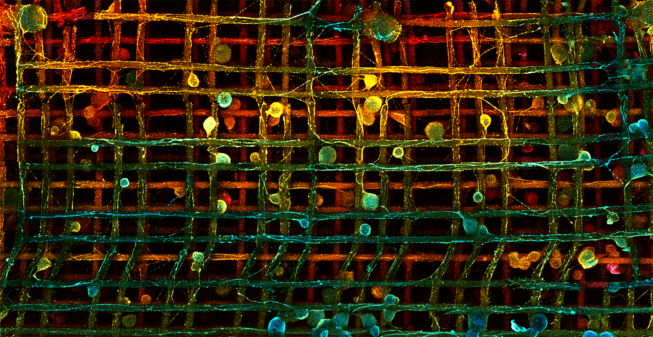Hybrid fabrication method of 3D bio-scaffolds for neural tissue regeneration made with a novel biomaterial (No. 0215)
|
|
|
<< Back to all technologies |
Summary
To date, there is no effective treatment for spinal cord damage. A promising new approach involves introducing artificial scaffolds at the site of injury for stem cell tissue regeneration. Whilst lithography offers control over scaffold architecture, it is slow, size-limiting and introduces non-biodegradable materials. Electrospinning is a much faster and lower-cost manufacturing alternative: a personalized scaffold can be produced within hours as opposed to days using conventional lithographic techniques, which has a huge impact on the patient’s prognosis. However, scaffolds fabricated by conventional electrospinning are mostly 2-dimensional, don’t allow customization of scaffolding parameters such as geometry, thickness and fiber alignment, and are not sufficiently conductive to be suitable for neural tissue applications. A team of OIST researchers has developed a novel composite biomaterial and a high-precision electrospinning process for the rapid fabrication of 3D fibrous scaffolds which are precisely tailored to fit the site of injury. This is a ground-breaking step towards the development of low-cost, personalized regenerative treatments for spinal cord damage.
Applications
- Neuroregeneration
- Potential for regeneration of other types of tissue, such as heart
- Development of nano-electronics for biological systems
Advantages
- Conductive and biodegradable
- Highly tunable properties
- Bedside technology: fast and precise fabrication for better healing after injury
Technology
The novel fiber composite combines a natural polymer with a neuro-hormone and a bio-pigment. The fiber materials are conductive and fully biodegradable, with controllable degradation rate. The fibers within the scaffold are designed to allow for the controlled release of trophic factors, with the inherent antioxidant effect of the composite reducing tissue inflammation. The hybrid fabrication technique combines the simplicity and affordability of electrospinning with the design precision of 3D-bioprinting to create a fully personalized therapeutic approach. The deposition of the fibers is guided by selectively charged grid patterns to rapidly build a scaffold precisely tailored to fit the site of injury.
Media Coverage and Presentations
![]() JST Technology Showcase Presentation (JP/EN)
JST Technology Showcase Presentation (JP/EN)
![]() JST Technology Showcase Presentation Slides (JP/EN)
JST Technology Showcase Presentation Slides (JP/EN)
CONTACT FOR MORE INFORMATION
![]() Paola Butler-Zanetti
Paola Butler-Zanetti
Technology Licensing Section
![]() tls@oist.jp
tls@oist.jp
![]() +81(0)98-966-8937
+81(0)98-966-8937







